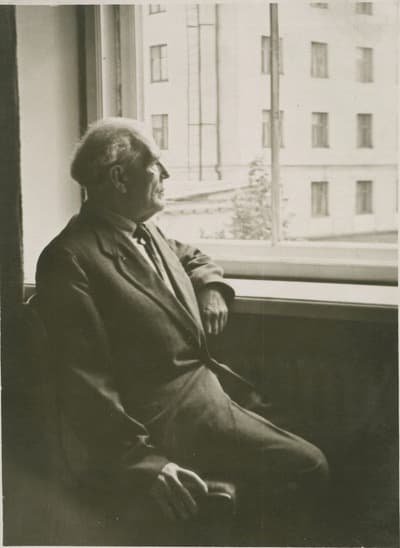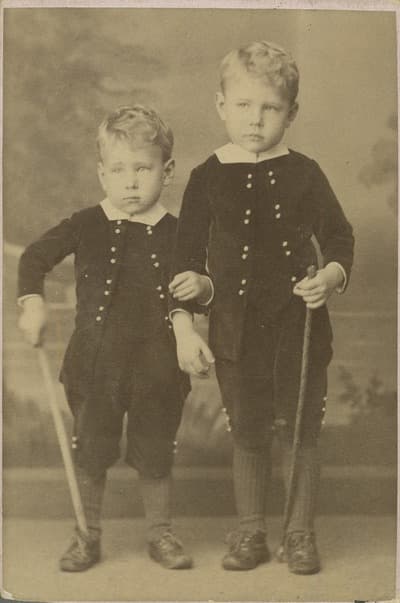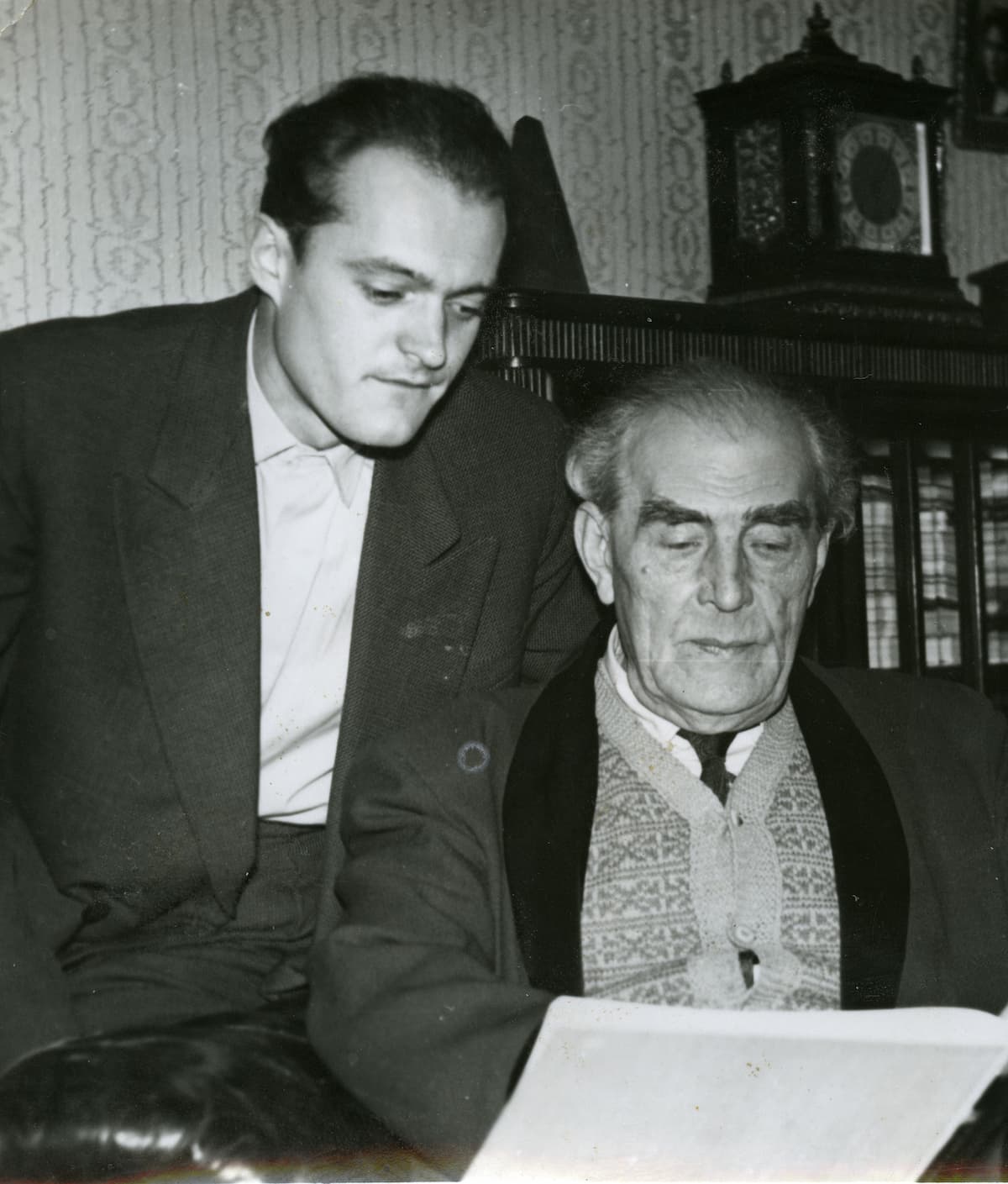There is nothing I like better than getting to know and explore lesser-known classical music and composers. Of course, notoriety and fame are completely relative, but I haven’t been exposed to the vast musical universes outside the conventional mainstream. Have you?

Heino Eller, 1957
And to tell you the truth, the name Heino Eller was completely unknown to me. But when I read an article and listened to the music posted on Interlude by my colleague Georg, I just knew that I wanted to explore more of his powerful and wonderful music. Since Heino Eller celebrated his birthday in March 1887, it’s only fitting that we present a little birthday tribute.
Heino Eller: Fantasy for Violin and Orchestra
So, who was Heino Eller? He is described as “one of the central figures in Estonian classical music, linking all parts of it into a coherent narrative, from the inception of a national culture to the modern day.” That is a very serious description indeed, especially as he is hardly known outside his native Estonia. One thing for sure, however, is that Eller clearly played a vital role in his country’s musical development, not only as a composer but also as an educator and teacher.
Heino Eller: Piano Music in Folk Tune (Sten Lassmann, piano)
Eller was born in Tartu, and he spent his childhood surrounded by music. He took private violin and music theory lessons, and he played in several ensembles and orchestras, even performing as a violin soloist. His professional training began relatively late, as he entered the Saint Petersburg Conservatory in 1907 to study violin with Prof. E. Krüger. However, he was also enrolled in the Faculty of Law, engaging in musical instruction on the side.
Heino Eller: Andantino in B minor (Sten Lassmann, piano)

Heino Eller and his brother
Prior to the establishment of the Tallinn Conservatory, now called the Estonian Academy of Music and Theatre, Estonian musicians flocked to the Conservatory in St Petersburg, a huge metropolis with a booming musical and artistic life. The musical core of the city was, without doubt, the conservatory founded by Anton Rubinstein in 1862. With changes in the political climate, it became the Petrograd Conservatory, the Leningrad Conservatory, and eventually a school of music named after Nicolai Rimsky-Korsakov.
Heino Eller: Dawn (Koit)
During the first years of his compositional activity, Eller focused on works for the piano and short orchestral pieces. He seems to fuse the classical and romantic traditions, taking a lyrical-romantic influence from Chopin, Grieg, Rachmaninoff and Scriabin. His piano music also sounds strong impressionist and expressionist features, and his Piano Sonata No. 1 is Estonia’s “first artistically mature piano sonata.”
The First Sonata was a graduation work for the Petrograd Conservatoire and was first performed at Eller’s final examination. The examination was chaired by the director of the Conservatoire, Alexander Glazunov, and the panel included Nikolay Sokolov, Maximilian Steinberg, son-in-law of Rimsky Korsakov, and Vasily Kalafati. A number of illustrious musicians were in the audience, including Lyapunov, Tcherepnin, and Vladimir Sofrontisky, the piano teacher of Shostakovich.
Heino Eller: Piano Sonata No. 1 (Sten Lassmann, piano)

Caricature of Heino Eller
Glazunov wrote in his report, “Refined compositional talent, good musician, fresh thoughts, interesting rhythmic contours, more independence in regard to musical form is advisable.” The Sonata did not fare well, as it was not performed again during Eller’s lifetime. It is a daunting and challenging piece, with a dense polyphonic texture and a highly virtuosos piano part. Eller called it “a whole big symphony that has too many notes.”
Heino Eller: Symphonic Legend (Estonian National Symphony Orchestra; Olari Elts, cond.)
Heino Eller graduated from the then-named Petrograd Conservatory in 1920, and he began to teach composition in his hometown. From 1920-1940, Eller was a member of the music theory and composition faculty at the Higher School of Music. According to experts, he laid the foundation for the Tartu composition school, which was highly influential in Estonian music in the first half of the 20th century. He initially counted Eduard Tubin, Eduard Oja, Olav Roots, Alfred Karindi, Johannes Bleive, and the musicologist Karl Leichter among his students.
Heino Eller: Sonata for Violin and Piano
During his time at the Higher School of Music, Eller’s music is primarily based on modes and interval structures from Estonian folk music. A scholar writes, “the northern colouring of Eller’s music places it close to Grieg while his refined nervous tension and impetuousness align him with Skryabin.”
Heino Eller: Estonian Dance (Sten Lassmann, piano)

Heino Eller’s autograph
To experts familiar with Eller’s music, “there are strong Scandinavian shadows, but his use of Estonian folk music lends his language a rather distinctive feel when one comes closer to it.” The Elegia for harp and strings was composed in 1931. It is described as an “impassioned threnody on the strings before a dialogue involving solo viola and harp emerges, which almost suggests that Eller had some Gallic sympathies.”
Heino Eller: Elegy for String and Harps (Scottish National Orchestra; Neeme Järvi, cond.)
From 1940 to his death, Eller was Professor of composition at the Tallinn Conservatoire, where Villem Kapp, Kaljo Raid, Boris Kõrver, Anatoli Garšnek, Leo Normet, Valter Ojakäär, Uno Naissoo, Arne Oit, Jaan Rääts, Heino Jürisalu, Arvo Pärt, Alo Põldmäe and Lepo Sumera were among his most important students. Eller’s music already had shown clear influences of folk-music, but he only started to use literal folkloric sources after 1940.
When he took up his academic position in Tallinn, Estonia had already been occupied by the Soviet Union and all aspects of life were reorganised along Soviet lines. In the arts, that meant a doctrine of Socialist Realism under the official slogan “national in form, socialist in content.” Every composer was well aware that failure to conform to Soviet rules would result in exclusion from the Union of Soviet Composers. Not only was the music banned, excluded composers were not even allowed to buy manuscript paper.
Heino Eller: Estonian Suite (Sten Lassmann, piano)
The founding father of modern musicology, Guido Adler from Vienna University described Eller’s music as a continuation of “Grieg’s Northern stye and a successful synthesis of impressionism and expressionism.” He even called him the “Estonian Sibelius.” During the early years of the Soviet occupation, however, Eller was severely criticised and labelled the “leading formalist.” He was even forced to write and read aloud during a radio broadcast a letter of repentance renouncing his own music.
The letter of repentance must have been well received because Eller was appointed chair of the organising committee of the Soviet Estonian Composers’ Union, and he attended the general assembly of the Soviet Composers’ Union in Leningrad. By the 1960s, he was lauded as the patriarch of Estonian music.
Heino Eller: 8 Pieces (Sten Lassmann, piano)

Heino Eller and Arvo Pärt
The Soviet system heaped high praise on Eller, as he was awarded the title of Merited Art Worker of the Estonian SSR (1945), People’s Artist of the Estonian SSR (1957) and People’s Artist of the USSR (1967). He also won the Prize of the Soviet Estonia (1948, 1965) and the Order of Lenin (1965). As you might imagine, these shiny medals did not inspire a great deal of respect once Estonia declared independence. In fact, his music and the composer were initially quickly forgotten.
Eller’s compositional legacy is vast, as we find some two dozen works for symphony orchestra, among them three symphonies. He also composed ten scores for string orchestra, five string quartets, two sonatas and various miniatures for violin and piano. As far as I know, not all of these works have been recorded.
Heino Eller: Symphony No. 2, “Andante-Allegro molto” (Estonian National Symphony Orchestra; Olari Elts, cond.)
The vast majority of his output is found in his piano music, with roughly two hundred works that have been recently recorded in its entirety. Eller composed music over six decades and he presents an astonishing wealth of materials. He certainly addresses many of the artistic tendencies of the 20th-Century.
It ranges from a late-Romantic style and Scriabin’s influences to a reflection of his Nordic heritage. However, he also probed musical modernism with linear polyphony, ambiguous tonality, and contemporary harmonies. I hope you enjoyed this short musical tribute to Heino Eller, and I, for one, will continue to explore the vast regions of the unknown musical universe.
For more of the best in classical music, sign up for our E-Newsletter
